Within Our Reach provides insights into engaging communities and restoration of the Willamette River
Heath Kelsey ·Tracey Saxby and I were in Corvallis, Oregon this week for the "Within Our Reach" conference on Willamette River restoration. The conference is supported by the Myer Memorial Trust (MMT) and is the brainchild of Pam Wiley, the Willamette River Initiative Director for MMT. IAN has been working with MMT for several years now, beginning with Bill Dennison providing a talk about ecosystem health report cards at the conference in 2012. Bill and I met with Pam Wiley in Brisbane, Australia in 2013, where she was accepting the prestigious International River Prize [pdf] on behalf of the Willamette River Initiative. Together we cooked up the idea for a Willamette River report card over coffee at "Brew" (one of my favorite coffee shops in Australia, and possibly the best espresso I've ever had!). The report card project began in earnest in August this year. Through a plenary talk and a project display, Tracey and I updated the Willamette River restoration community on progress on the report card and presented a draft layout.
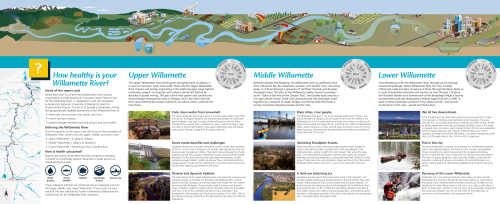
Response was great and we got lots of good feedback from attendees. We took a page from Conversant, who facilitated the recent Mississippi River Summit, and solicited written responses to specific questions on the report card and submitting these forms to us during the meeting. We got approximately 50 response cards back, a return of about 30% or so.
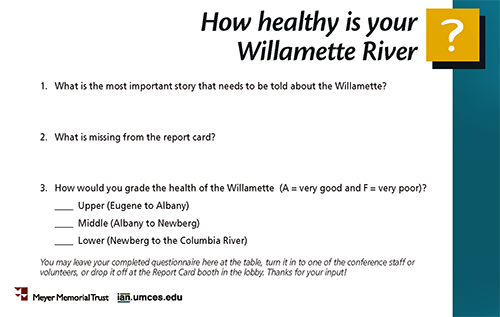
A major step in understanding the challenges in restoring the River is understanding public perception of its condition, and people's feeling of connectedness to the River and its waters. John Horvick of DHM Research presented the results of a large telephone survey that aimed to quantify some of those attitudes. It is apparent from the results that many people are not engaged with the River. Many did not know where their drinking water came from, and they had a poor perception of the rivers quality and its prognosis for improvement. These perceptions may be driven by recent news about sewer overflows and algal blooms in the Willamette near Portland, and by the presence of a superfund site beginning in Portland and continuing just downstream of the city. Although it is disheartening to hear negative perceptions about the river and its health, if you crane your neck a bit and put on your rose-colored glasses, these can be viewed as opportunities for improving community engagement. There is obviously a lot of work to do to educate the public about the health of the river and the many services it provides, and because people value these services, there are multiple values to exploit!
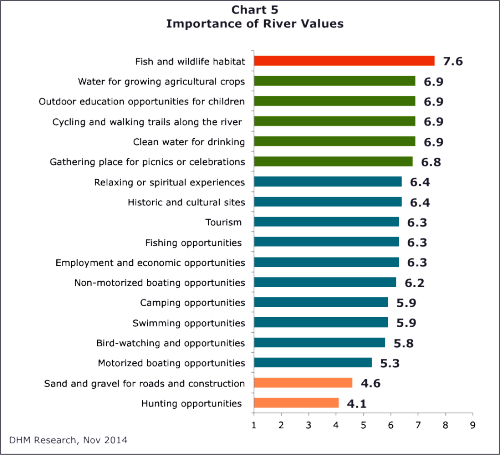
This discussion led many of us to take stock of the many ways in which the community is dependent on the River and the many services it provides. The report card is focused exclusively on ecosystem health, and although the survey respondents overwhelmingly valued aquatic resources and wildlife habitat, there are other services in the balance, including recreation, industry investment in the area (= jobs), drinking water supply, and irrigation. Many of the providers and users of these services were represented at the conference. I attended one session on the water supply needs for the watershed; the use of the River for drinking water is likely to increase for several communities to accommodate increased population and urban growth. Another session focused on recreational opportunities and the opportunities to increase the number of people who feel connected to the River, and the quality of that connection. Willie Levenson, the self-described “Ring Leader” for Human Access Project talked about the increased participation in the The Big Float, which gets people immersed in the Willamette in Portland, which is widely viewed as too polluted for contact recreation. Willy's goal is to dispel that misperception by dunking people and demonstrating that they lived to tell the tale!

For me, these discussions were very familiar, having heard similar concerns and conversations at events throughout the Mississippi River basin about the many services the River provides. The especially complementary nature of the services in the Willamette presents unique opportunities to leverage restoration efforts for multiple benefits. Restoration of wildlife habitat means improved water quality, which benefits drinking water uses, recreational opportunities, and potential investment from industries moving to the area. Enter the concept of Integrated River Basin Management (IRBM). Although I'm less than enthusiastic about the term or its acronym, I am impressed by the concept.
Dr. Hervé Piégay of the National Center for Scientific Research in Lyon, France gave an enlightening talk about the Rhone River, which, although larger and more developed than the Willamette, is similar in morphology and habitat. The IRBM concept has been employed on the Rhone for a number of years with impressive results in restoration of the river's ability to meander (change its channel location naturally), as sediment deposits are eroded and redistributed. Diverting a bit of water from energy and transportation canals to the natural river channel, and increasing the floodplain lands available for the River channel, allowed more natural erosion and gravel and sediment distribution. These changes created multiple benefits to infrastructure as well as fish abundance. By creating more shallow water habitat and allowing natural erosion processes in the floodplain, the rivers tendency to incised deep channels was reduced. This deepening of the River channel is a problem for infrastructure, which gets undermined and weakened as the channel gets deeper and closer to levees and bridges. This also created more shallow water habitat with more channel complexity, which improves fish habitat, abundance and diversity, riparian habitat and water quality, all of which are benefits to river users. Managing for multiple, integrated goals provides complementary benefits to several important services at once.
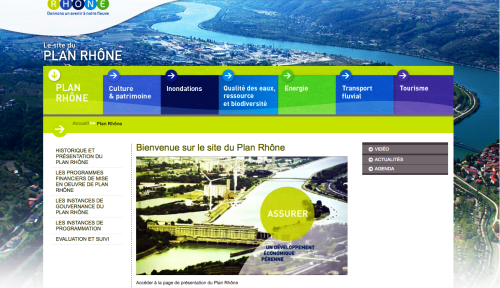
Whatever you call it, the opportunities to engage the community and reconnect people to the Willamette River is enhanced by the recognition of the multiple services provided by it. People will probably value at least one of these ecosystem services, even if they don't identify with all of them. People may not fish or hunt, but they may value wildlife and natural areas, recreation opportunities, the energy provided, or, at the very least, the drinking water they rely on. By appealing to these multiple values and services, we are more likely to re-establish the connections that people have to the River.
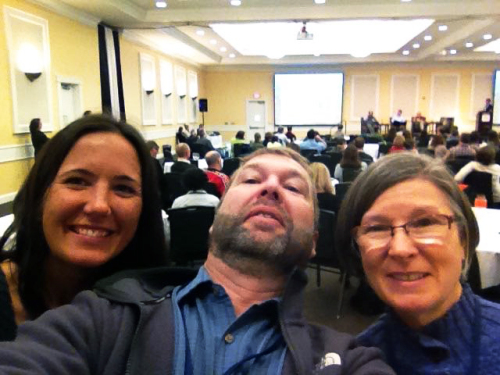
About the author
Heath Kelsey

Heath Kelsey has been with IAN since 2009, as a Science Integrator, Program Manager, and as Director since 2019. His work focuses on helping communities become more engaged in socio-environmental decision making. He has over 15-years of experience in stakeholder engagement, environmental and public health assessment, indicator development, and science communication. He has led numerous ecosystem health and socio-environmental health report card projects globally, in Australia, India, the South Pacific, Africa, and throughout the US. Dr. Kelsey received his MSPH (2000) and PhD (2006) from The University of South Carolina Arnold School of Public Health. He is a graduate of St Mary’s College of Maryland (1988), and was a Peace Corps Volunteer in Papua New Guinea from 1995-1998.

